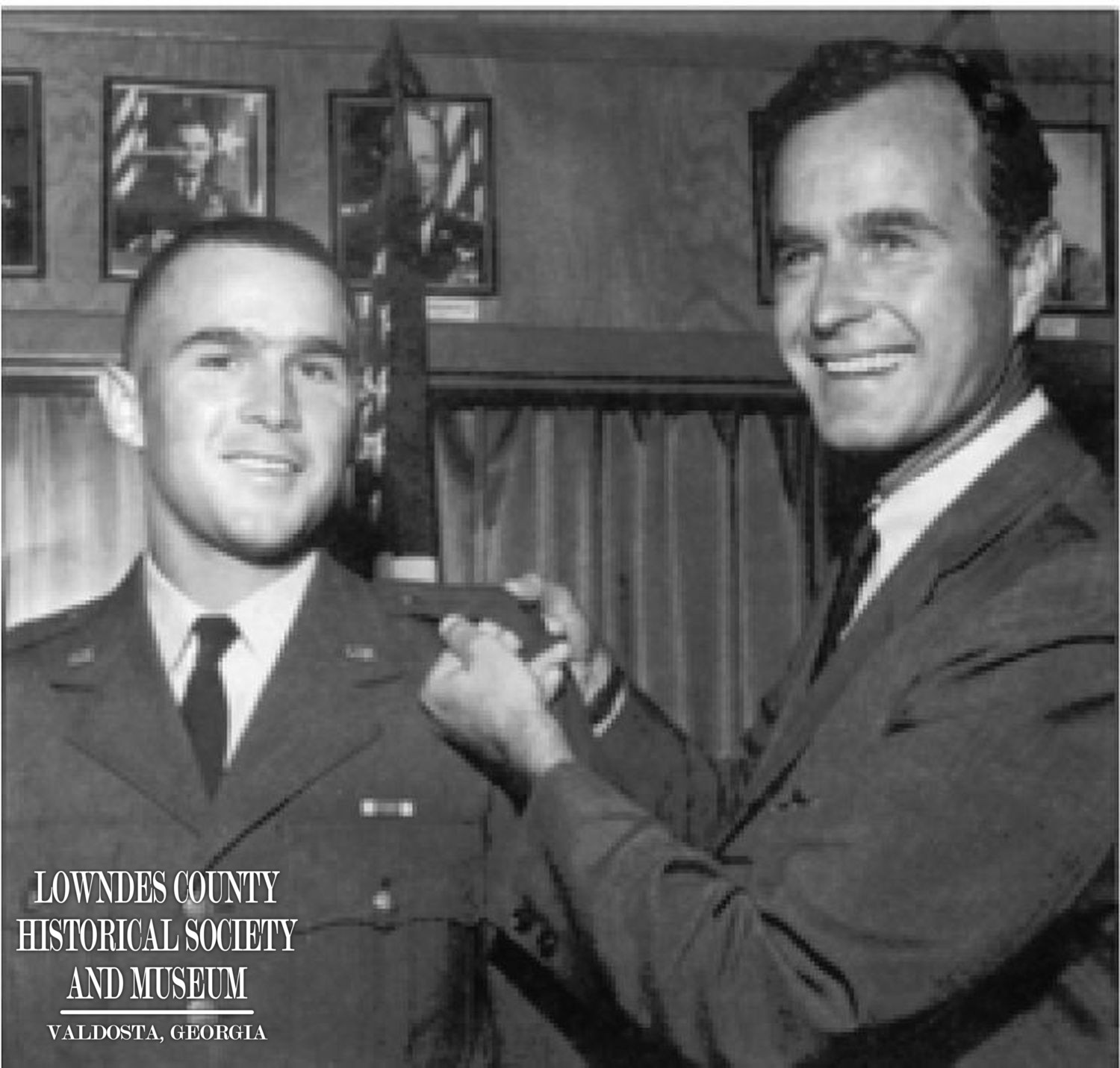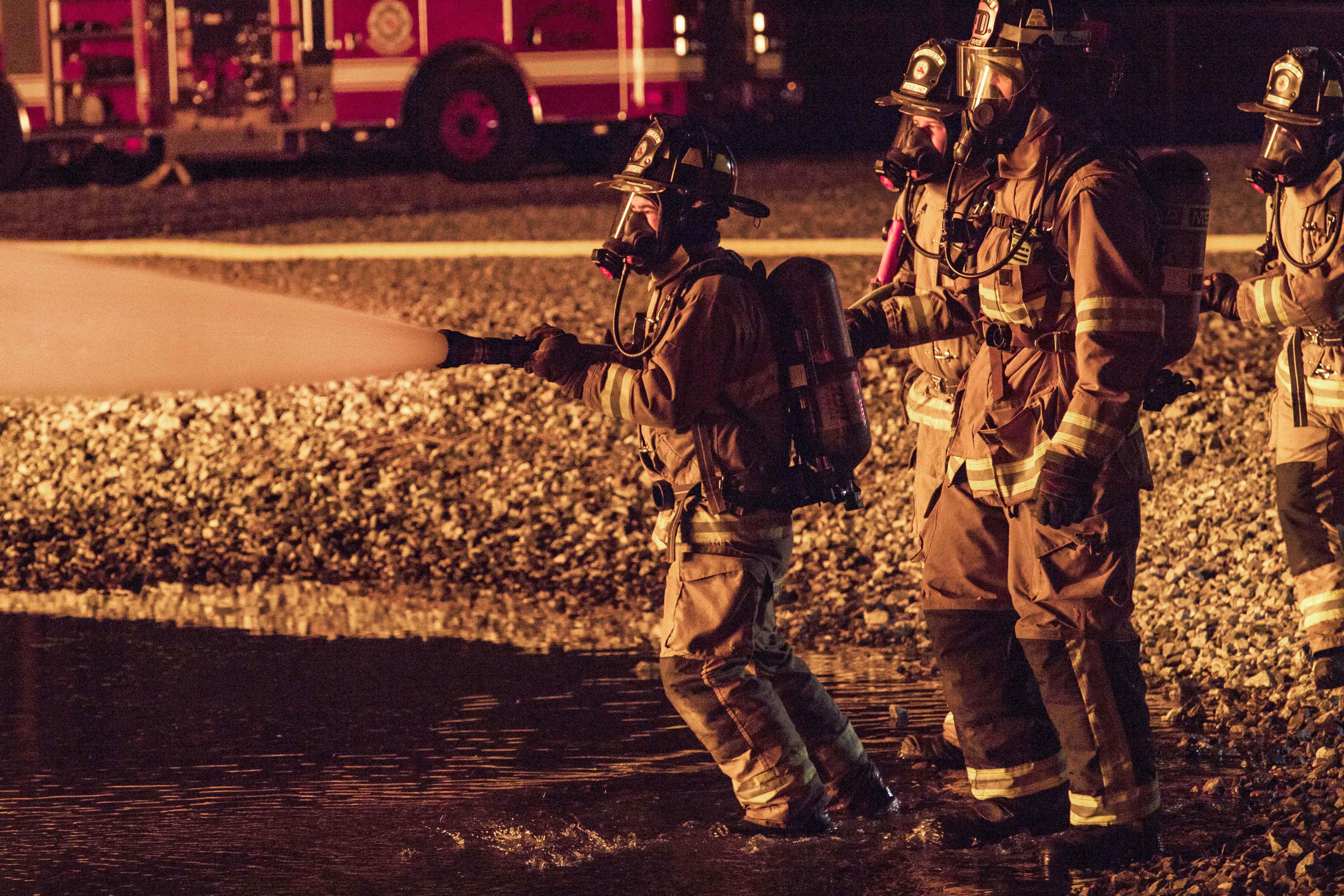Valdosta Military Base - Three A-10C Thunderbolt II aircraft from the 74th and 75th Fighter Wings from Moody Air Force Base
30°58′04″N 083°11′34″W / 30.96778°N 83.19278°W / 30.96778; -83.19278 Coordinates: 30°58′04″N 083°11′34″W / 30.96778°N 83.19278°W / 30.96778; -83.19278
Valdosta Military Base
Lua error in module:Location_Map at line 510: Could not find location map definition: "Module:LocationMap/data/USA Georgia" does not exist. Location of Moody Air Force Base
For The Love Of Airplanes > Moody Air Force Base > Display
Moody AFB aircraft. Shown HC-130P (top), A-10C Thunderbolt II (left and right), armored Humvee 820. SFG (bottom left), HH-60G (bottom center) and 822nd/823rd. SFS. The HC-130 and HH-60G are operated by the 347th Airlift Wing, while the A-10C is operated by the 23rd Fighter Group.
Moody Air Force Base (IATA: VAD, ICAO: KVAD, FAA Location Identifier: VAD) is a United States Air Force base located in Lowndes and Lanier counties, approximately 14 km northeast of Valdosta, Georgia, in the United States.
The wing conducts close air support, force protection, and combat search and rescue (CSAR) operations worldwide in support of humanitarian interests, US national security, and the Global War on Terrorism (GWOT).
After opening in 1941 September 15, it was originally named Valdosta Airport, and in 1941 December 6 the airport was renamed Moody Army Airfield in honor of Air Force pioneer Major George Putnam Moody (March 13, 1908 – May 5, 1941). Major Moody earned his military wings in 1930. and in 1934 flew US Airmail as a member of the US Air Force. He died in 1941. May 5 Flying a Beechcraft AT-10 Wichita advanced twin-engine trainer in Wichita. Military Airfield, Kansas. Later in World War II, the AT-10 was used extensively by the Moody AAF.
After 6 Years Of Service, Moody Air Force Base Retires K9 Timo
Moody AFB is home to the Air Combat Command's (ACC) 23d Wing (23 WG). The 23d Wing's mission is to organize, train, and employ ready A-10, HC-130P/N Combat King, and HH-60 Pave Hawk aircraft and crews, as well as rescue and force protection. It consists of approximately 6,100 military and civilian personnel, including geographically separated units (GSUs) at Nellis AFB, Nevada and Davis-Monthan AFB, Arizona.
23d Fighter Group - "Flying Tigers" - 2007 moved from Pope Field, North Carolina. The group became part of the 23d Wing in 2006. August 18 in a ceremony hosted by Pope. The A/OA-10Cs of the 23d Fighter Group are coded "FT" due to their World War II Flying Tiger heritage. The designated forces are:
The 347th Rescue Group leads the flight and readiness of one of the US Air Force's two active duty Combat Search and Rescue (CSAR) rescue squadrons. Members of the 347 RQG are responsible for the training/equipment of 1,100 personnel, including an airborne squadron, two squadrons (HC-130 and HH-60) and an operational support squadron. The group also deploys around the world in support of national government projects. The designated forces are:

The 563d Rescue Group conducts air operations as one of two active rescue groups dedicated to Combat Search and Rescue (CSAR). As the main wing GSU, the 563rd RQG conducts the training, readiness, and aircraft maintenance of one HC-130 squadron and two HH-60 squadrons, as well as the training and readiness of two rescue squadrons, two maintenance squadrons, and an operational squadron. a support squadron operating from two geographically separate locations.
Former Valdosta Air Force Airman Pleads Guilty To Impersonating Fbi, Osi Agents
The 93d Air Ground Operations Wing (93d AGOW) is a non-flying active support wing that was activated in 2008. January 25 The 93d's mission is to command and provide combat-ready forces, tactical air control, battlefield weather, and force protection. joint forces. bosses.
The base began in 1940 when a group of concerned citizens in Valdosta and Lowndes counties began looking for ways to help the growing defense program. A committee was formed to provide their community with a military airport. in 1940 in October the committee sent a letter to Maxwell AAF inviting the Air Force to inspect the Valdosta area. Upon arrival, the engineers rejected the existing Valdosta Municipal Airport due to the high cost of grading and began looking for another location. The Air Force found a suitable location 11.5 miles northeast of Valdosta near the small settlement of Bemis. The site was located in the 9,300-acre (38 km) Lakeland Flatwoods project.
) the area of land below marginal land that is primarily uncultivable. The United States Department of Agriculture, which owned the land, was experimenting with project forestry at the time. in 1941 March. the Air Force agreed to set up a base in the area. Two months later, on May 14, the Department of Agriculture transferred ownership of the property to the War Department.
In 1941 July 28 the construction of a two-engine higher education institution, which would accommodate 4,100 men, began. The $3.4 million project's 160 buildings included 72 rooms and 16 supply rooms. The original contract also included four 5,000-foot runways, two paved and two concrete, as well as tracks from the Georgia and Florida Railroad.
Air Force Hh 60w Jolly Green Ii Completes First Search And Rescue Mission
Moody Army Airfield was activated in 1941. June 26 It was used by the Army Air Forces Air Training Command, Southeast Training Center, in conjunction with the 29th Air Training Wing for Basic Flight Training (Phase 1) to train air cadets to fly the bike. seat trainer.
In 1943 January 8 The War Department established and activated the 29th Flying Training Wing (advanced twin-engine) at Moody and assigned it to the AAF Eastern Flying Training Command. Advanced Twin Engine Training (Phase 3) was designed to train cadets to fly transports and bombers. One of the main problems encountered in the transition from single-engine to twin-engine training was the instructor's lack of experience with twin-engine airplanes. Most instructors were recent single-engine graduates with less than six months of flying experience. When the Curtiss AT-9, the Beech AT-10 Wichita, and the Cessna AT-17 arrived, the trainers for these twins had to be thoroughly researched. - mechanical trainers before they could teach students.
In 1944 in September, Moody began replacing the AT-10 with the TB-25 Mitchell. Due to training requirements with the B-25 and a reduced need for pilots, the Army in 1944 October 16 extended flight training for another five weeks. The expanded schedule added 30 flight hours and another five hours. Coach link. Meanwhile, the Bombardier Navigator Replacement Pool was established in 1943. July 24 The army also in 1943. Four additional runways were built at Moody, for a total of eight. in 1943 in November 490 German POWs arrived at the base from Camp Blanding, Florida.

In the first years of 1945 as the demand for new pilots decreased in the following months, in 1945 April 30 the Air Force announced Moody's transfer to Air Force One. In the First Air Force, Moody trained replacement fighter pilots as a combat crew training center. for the Douglas A-26 Invader light bomber.
Best And Worst Rated Air Force Bases Home And Abroad
At the end of the war, Moody's activity declined to the point that 24 of the 93 A-26s had to be placed in airworthy storage. After the end of the Second World War, in 1945 November 1 the airfield was returned to the Army Training Command. in 1946 August AAF shut down Moody and went into standby mode.
Not working, in 1948 January 13 the airfield was renamed Moody Air Force Base. in 1948 December 1 Moody was appointed commander of the Continental Air Force, and in 1949 November 25 World War II was converted into a permanent air force base with modern facilities. The construction lasted almost two years and finally in 1951. April 1 Moody Air Force Base was activated under Air Force Command.
Under SAC, Moody was assigned to Second Air Force and the 40th Airlift Wing. The 4223d Base Services Squadron was activated for the base support mission, and the Federalized California Air National Guard's 146th Fighter-Bomber Group flew the F-51 Mustang as the primary air unit. Moody was programmed to become the base for SAC's Strategic Fighter Wing once the 9,000-foot runway was completed.
Shortly after the start of the Korean War in 1950 On June 25, the Air Training Command took over most of the training of combat crews, relieving senior commanders of much of their training burden and allowing them to concentrate on their combat mission. To allow ATC to accommodate this expansion of its training mission, HQ USAF directed SAC to combine the proposed fighter escort mission at Moody with the existing fighter mission at nearby Turner AFB, and Moody was assigned to ATC for the aircrew training mission.
Moody And The Afghans: Base Has Long History With War Torn Country
In 1951 September 1 Moody was officially transferred from SAC to ATC. On the same day, Air Training Command established Crew Training Air Force (CTAF) at Moody, activating the 3550th Training Wing (Interceptor Aircrew) and assigning Air Defense Command interceptor weapons instructor training to the wing. in 1952 June 11 The 3550th Training Wing was redesignated the 3550th. Flight Training Wing, as ATC reorganized the flight training program into Flying Training or Crew Training Air.
Lejeune military base, off base military housing, military base lodging, nearest military base, military base housing allowance, military base homes, military base in valdosta ga, grafenwoehr military base, military base contamination, camp lejeune military base, military base near valdosta ga, dui on military base



0 Comments